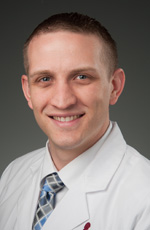Program Information
Tissue Segmentation of Computed Tomography Images Using a Random Forest Algorithm: A Feasibility Study
D Polan1 , S Brady2*, R Kaufman2 , (1) University of Michigan, Ann Arbor, MI, (2) St. Jude Children's Research Hospital, Memphis, TN
Presentations
SU-C-207B-5 (Sunday, July 31, 2016) 1:00 PM - 1:55 PM Room: 207 B
Purpose: Develop an automated Random Forest algorithm for tissue segmentation of CT examinations.
Methods: Seven materials were classified for segmentation: background, lung/internal gas, fat, muscle, solid organ parenchyma, blood/contrast, and bone using Matlab and the Trainable Weka Segmentation (TWS) plugin of FIJI. The following classifier feature filters of TWS were investigated: minimum, maximum, mean, and variance each evaluated over a pixel radius of 2n, (n = 0-4). Also noise reduction and edge preserving filters, Gaussian, bilateral, Kuwahara, and anisotropic diffusion, were evaluated. The algorithm used 200 trees with 2 features per node. A training data set was established using an anonymized patient’s (male, 20 yr, 72 kg) chest-abdomen-pelvis CT examination. To establish segmentation ground truth, the training data were manually segmented using Eclipse planning software, and an intra-observer reproducibility test was conducted. Six additional patient data sets were segmented based on classifier data generated from the training data. Accuracy of segmentation was determined by calculating the Dice similarity coefficient (DSC) between manual and auto segmented images.
Results: The optimized auto-segmentation algorithm resulted in 16 features calculated using maximum, mean, variance, and Gaussian blur filters with kernel radii of 1, 2, and 4 pixels, in addition to the original CT number, and Kuwahara filter (linear kernel of 19 pixels). Ground truth had a DSC of 0.94 (range: 0.90-0.99) for adult and 0.92 (range: 0.85-0.99) for pediatric data sets across all seven segmentation classes. The automated algorithm produced segmentation with an average DSC of 0.85 ± 0.04 (range: 0.81-1.00) for the adult patients, and 0.86 ± 0.03 (range: 0.80-0.99) for the pediatric patients.
Conclusion: The TWS Random Forest auto-segmentation algorithm was optimized for CT environment, and able to segment seven material classes over a range of body habitus and CT protocol parameters with an average DSC of 0.86 ± 0.04 (range: 0.80-0.99).
Contact Email:

